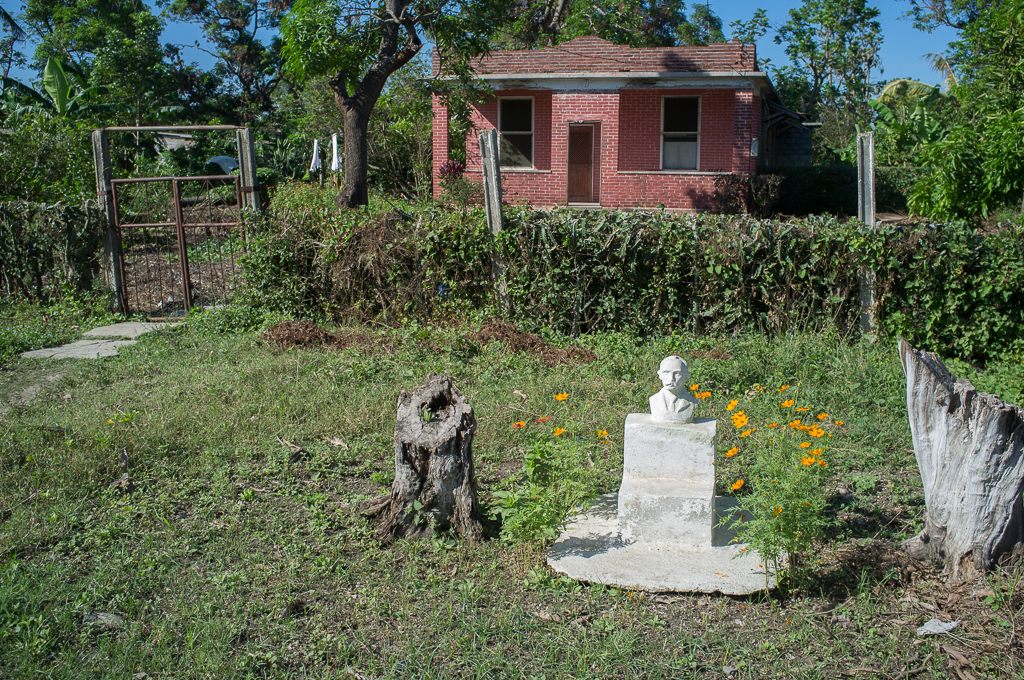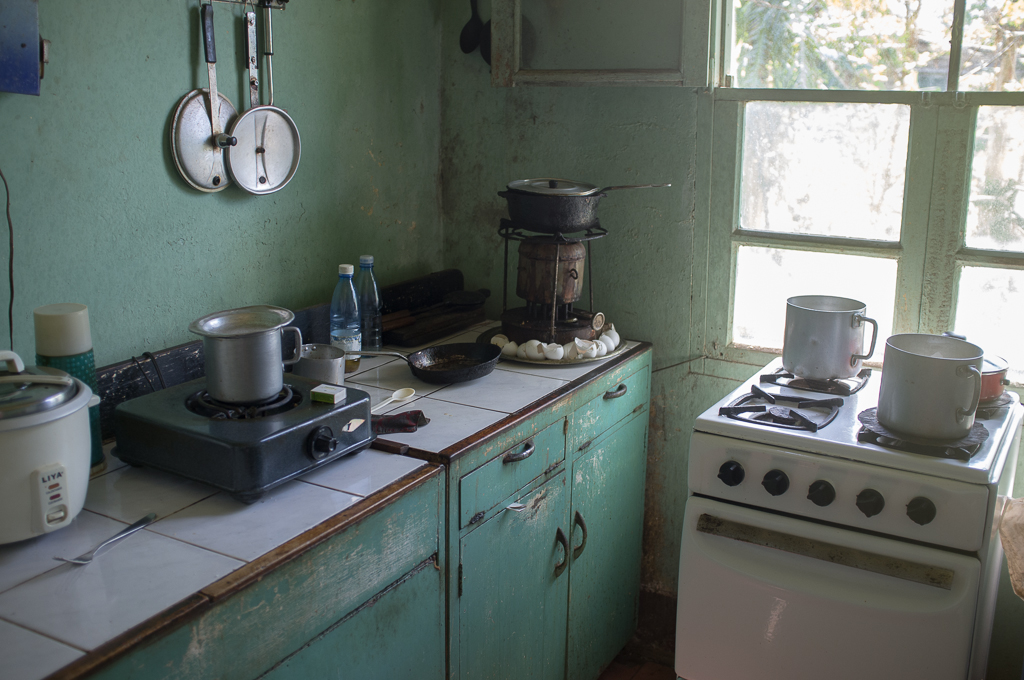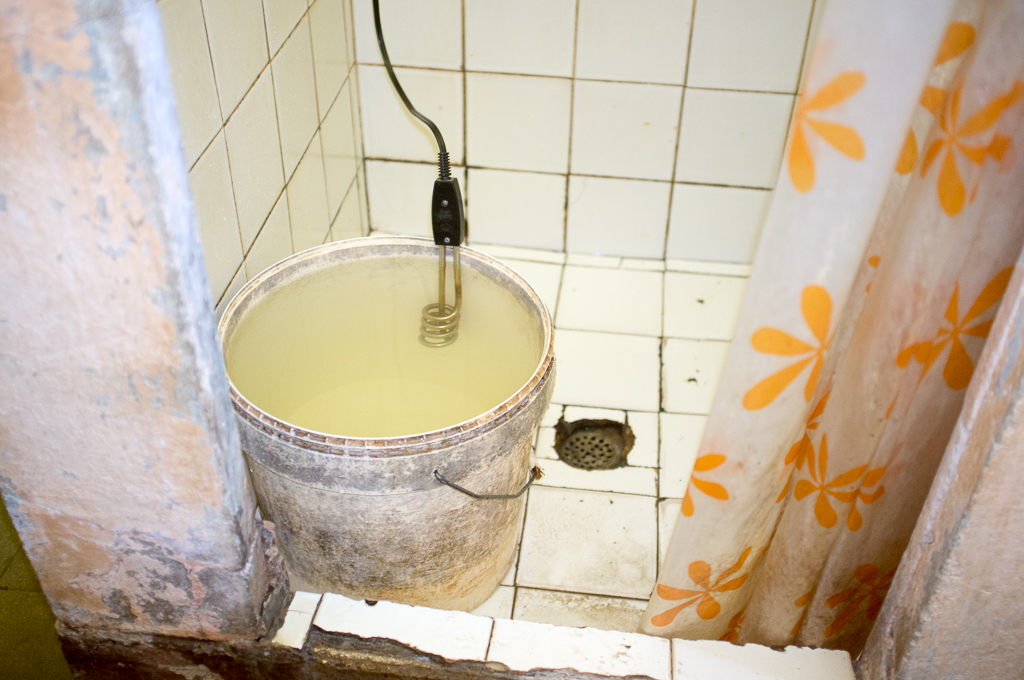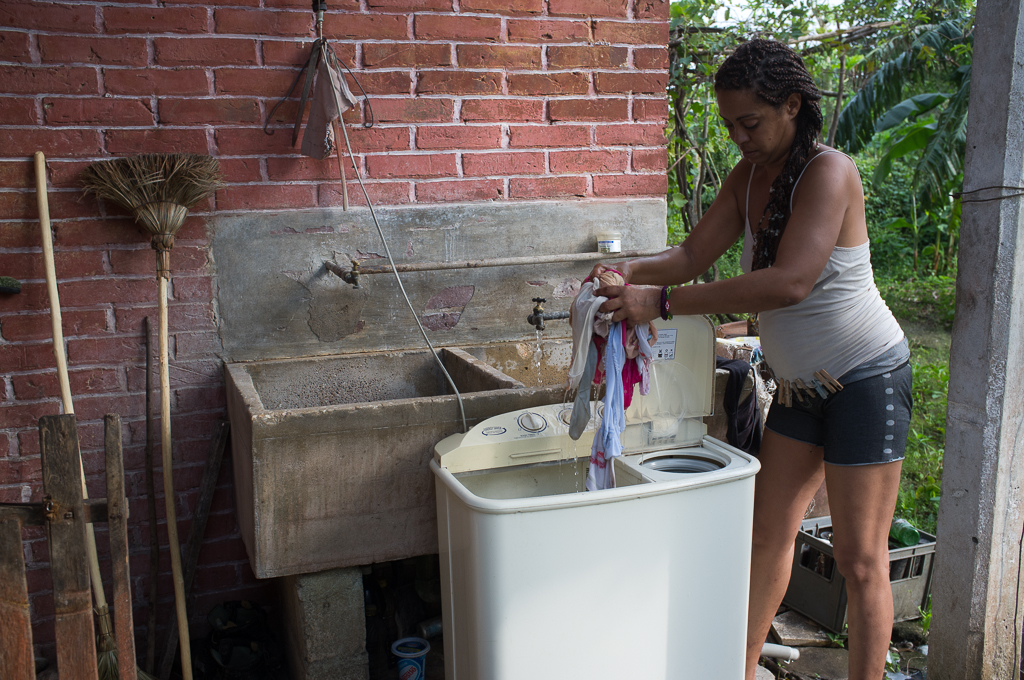
A visit with a Cuban family in a small
community
I had the opportunity to
spend 3 days with a Cuban family in a small community. This was not the licensed
rental room I have done many times before
but
simply a family guest. It was an eye opening experience.
The family:
The family of six consists
of four sisters all in their 60’s or 70’s, three divorced and one never married,
a 14 year old granddaughter and a 20 year old male who is enrolled in a
university and occasionally returns on weekends. He is considered the brother of
the 14 year old and a grandson although his actual birth mother is one of the
sisters. The original patriarch was German-Jewish although the family is now
well blended with African, Spanish, and Jamaican bloodlines. 19 cousins or their
family members live within a 2 minute walk. Three of the sisters are retired.
One was once a government economist but now cleans the government office. Total
family income from pensions and the one worker is less than $20 per month but
they receive financial assistance from a daughter who is a tourist guide in
Havana. She is the mother of the 14 year old girl and considered the mother of
the 20 year old male.
The community:
They live in Guaro, a
community that appears to have around 2,000 residents in rural Holguin province
which is in eastern Cuba. The community originally existed because of a large
sugar mill which was decommissioned and cannibalized for parts about 40 years
ago. Although almost all Cubans are mixed race, there are two sections of town;
one predominated by residents with a majority Negro heritage. The few jobs in
town now are government social services such as the doctors, dentists, or
administration. The currency is almost exclusively Cuban pesos and not the
convertible peso typically used for higher priced consumer goods. There are four
small stores selling beer, rum, cigarettes, and a limited selection of
groceries. Guaro has an outdoor stand selling pirated DVD’s just as ever other
community has. There is no police, fire, ambulance or other services, such being
provided from the municipality of Mayarí about 6 miles away. The largest
building in town is a movie theater which was abandoned about 40 years ago and
is now approaching collapse. Guaro has six automobiles and one road paved many
years ago.
The house:

 The
kitchen has a gas stove, an electric hot plate, and a diesel or kerosene burner.
There is also a charcoal stove immediately outside when none of the other energy
sources are available. The gas stove is used sparingly as the household is
allotted only one large cylinder of LP gas per year. The diesel burner is used
quite a bit for slow cooking beans, a dietary staple. There is the rice cooker
and a stove top pressure cooker, present in every Cuban kitchen. Cuban
refrigerators come in only one size, about 12 cubic feet. This is more than
adequate as contents are typically consumed in a day. There is the large pot to
boil water to drink, standard in Cuban households across the island.
The
kitchen has a gas stove, an electric hot plate, and a diesel or kerosene burner.
There is also a charcoal stove immediately outside when none of the other energy
sources are available. The gas stove is used sparingly as the household is
allotted only one large cylinder of LP gas per year. The diesel burner is used
quite a bit for slow cooking beans, a dietary staple. There is the rice cooker
and a stove top pressure cooker, present in every Cuban kitchen. Cuban
refrigerators come in only one size, about 12 cubic feet. This is more than
adequate as contents are typically consumed in a day. There is the large pot to
boil water to drink, standard in Cuban households across the island.
 Both
bathrooms have functional flush toilets, a rarity for most households. Cubans do
not use toilet seats. Toilet paper is pages from Granma, the official newspaper.
As a special guest, I was given paper towels. Toilet paper is always placed in a
trash can and never flushed to avoid plumbing problems, standard country wide.
Both bathrooms have shower stalls but without running water. Water to shower is
heated with an electric immersion coil and dipped from a bucket.
Both
bathrooms have functional flush toilets, a rarity for most households. Cubans do
not use toilet seats. Toilet paper is pages from Granma, the official newspaper.
As a special guest, I was given paper towels. Toilet paper is always placed in a
trash can and never flushed to avoid plumbing problems, standard country wide.
Both bathrooms have shower stalls but without running water. Water to shower is
heated with an electric immersion coil and dipped from a bucket.
Each room has its own fan
as there is no air conditioning. Heaters do not exist in Cuba.
Food:
I was served the normal
diet with a few additions. Rice is a staple at almost every lunch and dinner.
Meat is either local pork or chicken as fish is expensive and beef is cost
prohibitive. There is a moderate selection of starchy root vegetables and
cabbage for salad. Bread comes from the local bakery and is the same nationwide.
Eggs are from local chickens. Everything is distributed through local government
sources, most purchased at steeply discounted prices using the libreta or ration
booklet. Only small onions and garlic are available from local farmers. Salt is
essentially the only spice but is used in abundance. Being a special guest, I
was offered fresh cow milk. I also saw the cow. Americans would consider the
menu extremely limited and the food bland. However leftovers, if any, never last
beyond the next meal.
Washing machine:

Social:
I, along with everyone in
town under 45 years old, attended the “fiesta de quince” or 15th
birthday party for a local girl. This is a major social event in every young
Cuban girl’s life, essentially commemorating her entering womanhood. It was a
huge street party complete with disco trailer featuring flashing lights and
music. Most seemed to just stand around although a few danced.
The next night, Saturday
night, I attended the community wide kids dance party in the square. Music was
from a boom box and people seemed to just stand around again. A few danced but
the kids mostly socialized, some with the opposite sex, some with their friends.
A normal day:
A typical day includes much
time to relax with four women, one working part time, to share cleaning,
cooking, and laundry. External intellectual input consists of Granma, the
official communist party newspaper which is always eight pages and a few TV
channels. Most Cubans have TV’s and DVD players. Most popular are bootleg copies
of US grade B movies with subtitles and recordings of American TV shows. No one
realizes the US produces so many bad movies which are never shown in theatres
but distributed on DVD until traveling to Cuba. Still, most of the day is
consumed with sitting and relaxing.
The 14 year old attends
school until late afternoon Monday through Fridays and every other Saturday. She
converses well in English, a skill she learns in school. The local school is
considered excellent. Cubans are very well educated but unfortunately have few
opportunities to utilize such.
My impressions:
I was impressed with the
strong sense of family unity, both members of the household as well as nearby
relatives. Everything is shared. Nothing seems to belong to an individual but to
the family as a unit. A cousin from down the street appears and a glass of rum
becomes two half full glasses. No one hesitates to cook or wash clothes for
everyone. Meager financial resources go into a family pool. Someone brings home
something special to eat and it belongs to everyone in the family. There is no
mine, only ours.
Equally impressive was the
town of Guaro but in a negative sense. While it has a sense of community similar
to the family, it otherwise has very little going for it. There are no jobs or
any apparent potential. External intellectual stimulation does not exist. People
seem to just vegetate there. A cousin of the family was sent to a university in
Germany where he received an engineering degree but has never found employment.
He is now a 45 year old with a brain muddled by too many years of alcohol abuse.
The 20 year old son does not plan on staying in Guaro when he completes his
university education in English language studies. The 14 year olds mother plans
to move her to Havana once she finishes high school saying “There is nothing to
do in Guaro except drink and fuck. I don’t want her to be a pregnant 17 year old
continuing the cycle.” What is a small friendly close knit community to the
visitor unfortunately appears to be a dead end street for the residents.